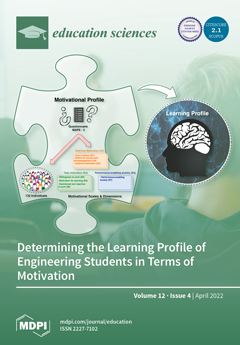Despite being one of the pillars of physics and a well-known subject, the electric force is sometimes not immediately evident to students. Discovery-based learning has proven to be very effective in science education; nevertheless, it can become stressful for students if they don’t
[...] Read more.
Despite being one of the pillars of physics and a well-known subject, the electric force is sometimes not immediately evident to students. Discovery-based learning has proven to be very effective in science education; nevertheless, it can become stressful for students if they don’t have the necessary scaffolding and training to construct knowledge by themselves. In this work, examples of obstacles to students were the absence of the necessary background knowledge, distractions in multimedia environments, and that some students prefer regular instruction in order not to be left alone in the face of active learning dynamics. Therefore, we designed and implemented an assisted active learning sequence that includes moderated intervention from two different lecturers on an Electricity and Magnetism course at a private university in Mexico to compare the normalized learning changes with a standard directed lecture. The primary objective of the active learning sequence was to introduce students to the discovery of the electric force via a simulated experiment using a web-based physics simulation, Newtondreams. By comparing normalized learning changes between four groups, two control, and two experimental groups, we show that students in the experimental groups performed significantly better than the control groups (
= 0.469 and 0.435 for the experimental groups, and
= 0.08 and 0.077 for the control groups). We performed a Wilcoxon Rank-Sum Test to examine the normalized gains between the groups. Observed p-values show that there is significant difference between experimental and control groups: CG1 vs. EG1 (
p = 0.00109), CG2 vs. EG2 (
p = 0.00079). On the contrary there are no observed significance on the effect of the instructor CG1 vs. CG2 (
p = 1), EG1 vs. EG2 (
p = 1). Then, that active learning is more effective than regular instruction. Studying the concentration factors we also found that active learning develop better comprehension that regular instruction lecture. At the end of the experiments, we performed student interviews that also showed they felt less stressed and more involved when using the assisted active learning sequence, making the learning experience more amenable when the instructor changes their role from presenter to a guide.
Full article





